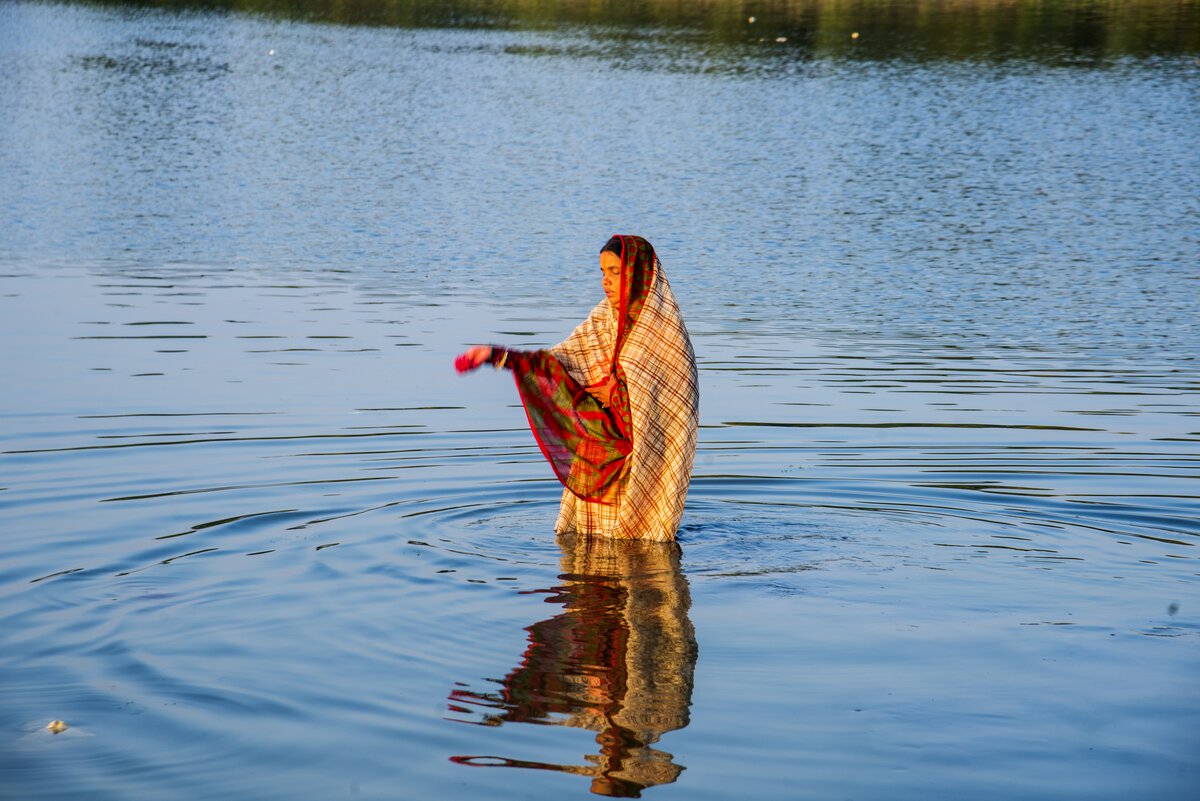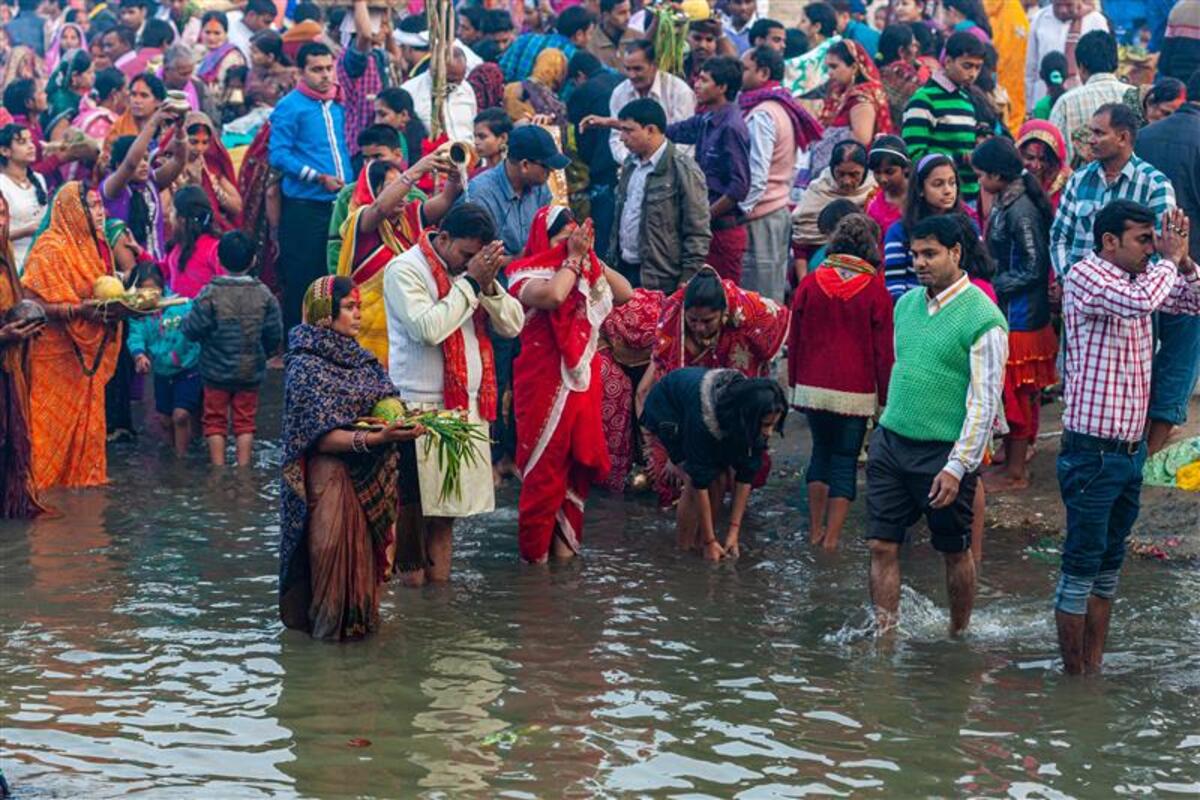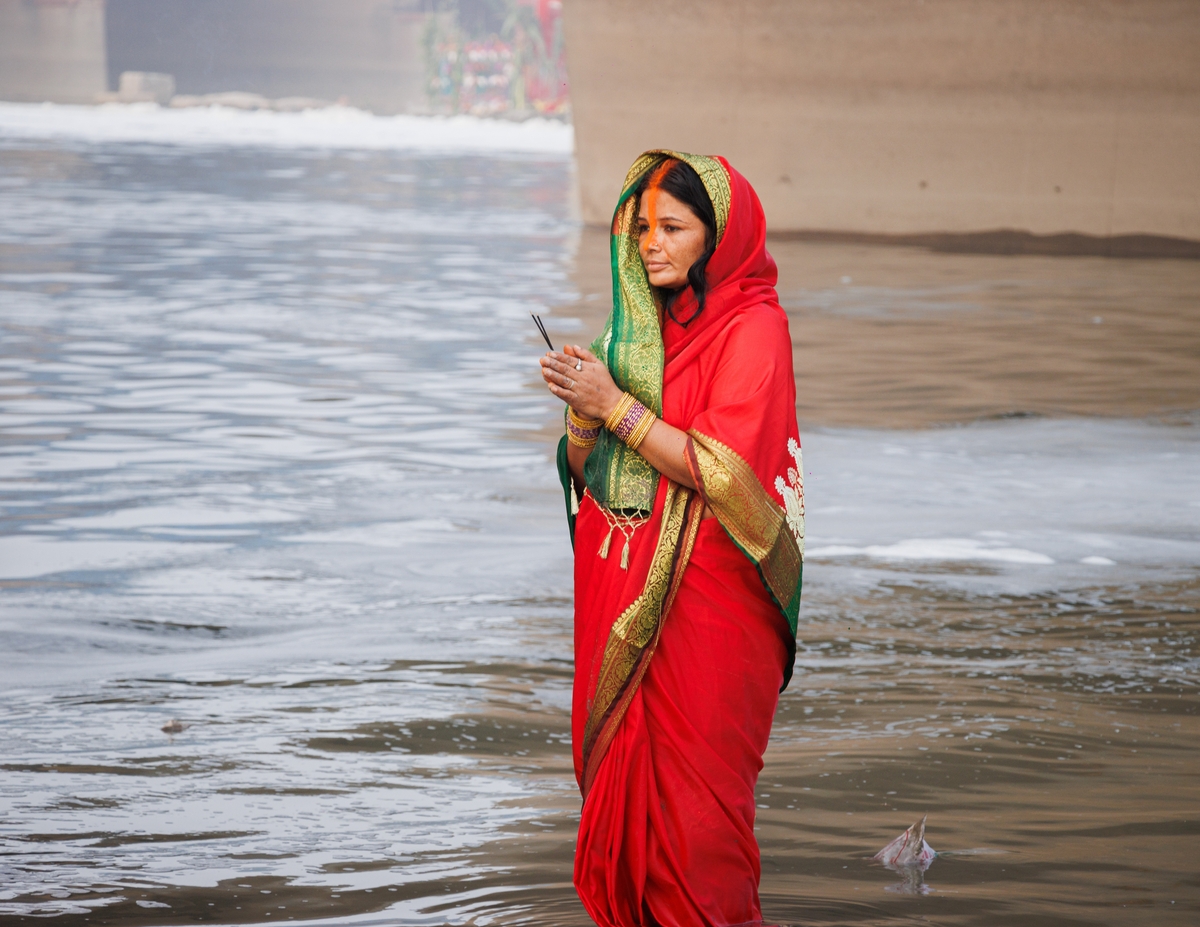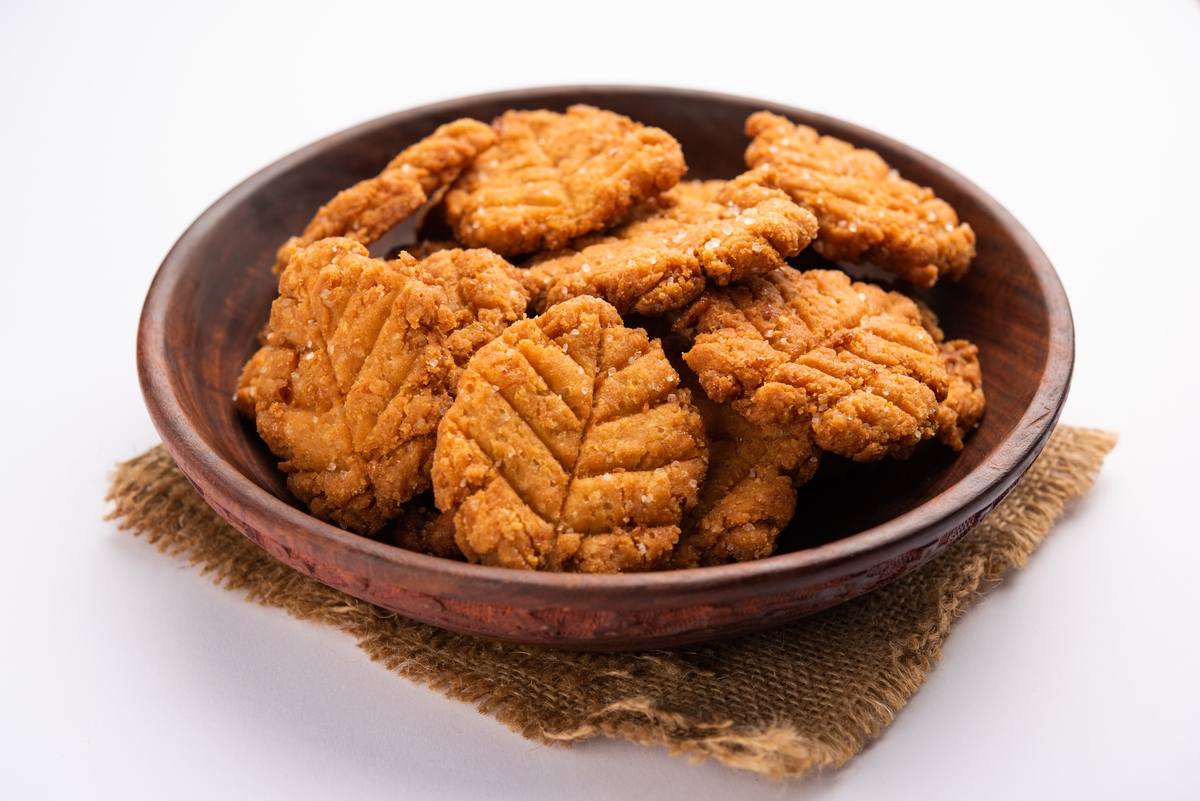October 29, 2024
Why Chhath Puja in Bihar Deserves a Place on Your Travel Bucket List
CM Content Team


View all
140+
Resorts
October 29, 2024
CM Content Team
At dawn’s edge, before most of the world stirs, you stand on a riverbank. The air is cool, the mist still half‑awake, and across the water, faint voices rise in song. Somewhere, a diya (clay lamp) is lit, and it trembles gently in the early wind. That lamp becomes a signal, a pulse. It says: Come closer. Be present. Offer your devotion to the sun, your gratitude to earth, your faith to what is unseen but felt.
Such is Chhath Puja in Bihar, a festival that resists grandiosity and instead invites communion. Not spectacle, but stillness. Not performance, but presence. For a traveller seeking depth, this festival offers a rare window into India’s soul: where nature, devotion, community, and identity meet in the horizon’s glow.
This is not a story of myths and legends alone. It’s a story of people walking barefoot, songs rising from the heart, the river flowing in every gesture. It is a festival that asks not just for eyes to see, but for hearts to lean in.
In 2025, Chhath Puja will be observed from October 25 to October 28, marking four deeply significant days of devotion and ritual. The celebration begins with Nahay Khay, followed by Kharna, and culminates in the twin offerings to the Sun, Sandhya Arghya (sunset) on October 27 and Usha Arghya (sunrise) on October 28. These dates see lakhs of devotees gather by rivers and ponds to express gratitude and seek blessings. Ghats across Bihar and Eastern Uttar Pradesh become vibrant with hymns, lights, and reverent silence. For travellers, it’s a time when faith shapes the landscape, and every sunrise feels sacred.


Chhath Puja is one of the most spiritually profound festivals in India, rooted in purity, discipline, and gratitude. It is dedicated to Surya, the Sun God, and his sister Chhathi Maiya, who is believed to grant health, longevity, and prosperity to devotees and their families. Unlike many festivals, Chhath is marked by a direct connection with natural elements, sun, water, and earth, symbolising harmony between humanity and nature. Fasting, standing in water, and offering prayers during sunrise and sunset represent surrender, endurance, and deep inner cleansing. Through simplicity and silence, Chhath fosters a sacred space where the soul reconnects with the divine, without intermediaries, without excess, just devotion in its rawest, most powerful form.

Chhath is inseparable from water, the river, the pond, the stream. Water is the altar. Here, devotees stand chest- or waist-deep, holding offerings, fruits, sugarcane, thekua (a baked sweet), raw rice, and coconut in beautiful baskets or earthenware. The offering (arghya) happens twice: at sunset (Sandhya Arghya) and at sunrise (Usha Arghya). With folded hands, they stretch toward the sun, acting as living conduits between earth and sky.
What draws travellers is this visceral interplay: the sun lowering into water, reflected again in flame; the rhythm of chanting and song; the ripple of bodies in shared prayer; the hush that gathers as the offering is made. The river holds memory, the sun gives blessing, and devotion becomes visible.
In Bihar, in Patna, Munger, Darbhanga, Muzaffarpur, and Saran, the riverbanks swell. The ghats are filled with platforms of bamboo and planks, and devotees assemble early. Some travel from distant villages; many cross state borders. Every ghat has its own personality: crowded or quieter, urban skyline or banana groves beyond. Yet each feels intimate when you step close.

Chhath is not easy. Its disciplines are strict. Devotees purify their bodies, fasting, abstaining from water at certain stages (nirjala), bathing ceremonially, and avoiding salt, onion, and garlic. The days are long; the nights are longer. The rituals demand patience, focus, and surrender.
The tension lies between hunger and faith; in the silent ache that urges you inward. Yet that tension is precisely where you find clarity. A distracted mind gives way to steady breath. A rushed spirit yields to quiet longing. For travellers, joining or witnessing this discipline is a humbling lesson in surrender, not as weakness but as strength.
When the final morning arrives, the sunrise offering, every moment of waiting, every pang of thirst, every silent step becomes a portal. In that blaze of new light, devotion finds shape. The horizon opens like a blessing, soft and certain. A hush settles over the crowd, as if time itself pauses to witness. And in that stillness, something ancient stirs awake within the soul.
Chhath is woven into the cultural fabric of Mithila, Magadh, Anga, and Bhojpur. The songs sung at ghats are Maithili or Bhojpuri. Folk tunes, couplets, and prayers were passed down through generations. In homes before the ghats, women prepare offerings using brass or earthenware, clean rituals, traditional recipes, and ancestral rhythms. Kitchens glow, each pot is set with care, and the lamp is polished. Homes are purified, families gather in quiet intent.
In rural Bihar, windows are shut early to maintain silence; paths are swept; lamps are hung on thresholds; children practice the folk songs. It is a collective hush that smoulders until the evening. The festival becomes an act of reclamation, for identity, memory, and presence. For travellers, this is not a tourist spectacle. It is an invitation into a living world. It asks you to slow, to listen, to follow the thread of tradition without intrusion. Every gesture carries memory; every silence holds meaning. And in simply witnessing with respect, you become part of the story.

Chhath Puja isn’t just a spiritual experience; it’s also a celebration of simple, soul-satisfying food steeped in tradition. Every dish is made with purity in mind, often without onion, garlic, or common spices. Thekua, a deep-fried wheat flour cookie sweetened with jaggery, is the signature delicacy offered during the puja. Rice-laddu (made from soaked rice and jaggery), steamed rice with lauki (bottle gourd), and kheer made with raw rice and milk also hold special significance. These offerings, prepared with devotion, are first presented to the Sun God before being shared among family and community. Eating them becomes an extension of the prayer itself, simple, sacred, and deeply nourishing. Even the act of preparation is meditative, performed with ritual cleanliness and heartfelt care. Each bite connects you to generations past, who offered the same prayers under the same sun.
Chhath Puja in Bihar should be on your travel list because here, tradition doesn’t sit behind glass; it walks beside you, living and breathing. Faith reveals itself not in grandeur, but in the grit and grace of everyday devotion. The elements, river, sun, wind, sky, don’t frame the ritual; they are part of it. Communities embrace you with a warmth that doesn’t ask your name. And in the stillness of dawn, as the first light touches water, something quiet within begins to shift. What starts as a search for meaning often ends as a rediscovery of self. You arrive as a witness and depart transformed. The chants linger long after the voices have faded. The river's rhythm syncs with your own breath. And the light you carry forward feels a little more sacred than before.

When planning to witness Chhath Puja in Bihar, choosing the right stay is about more than just comfort; it’s about proximity, peace, and perspective. One of the most refined options is the Marasa Sarovar Premiere Resort. With its serene setting and elegant design, this resort in Bodh Gaya offers a tranquil base to experience the spiritual energy of Chhath without the bustle of crowded city centres. The resort is well-suited for those seeking both cultural immersion and modern amenities.
From Bodh Gaya, travellers can make day trips to key Chhath locations in nearby towns, while returning to the calm of landscaped gardens, meditative spaces, and thoughtful hospitality. For sunrise rituals, the early morning drive becomes part of the pilgrimage, quiet, reflective, and beautifully scenic.


Eastern Uttar Pradesh celebrates Chhath Puja with deep devotion, especially along the ghats of Varanasi, Prayagraj, Gorakhpur, and Ballia. Staying near Assi or Dashashwamedh Ghat in Varanasi, or close to the Sangam in Prayagraj, ensures front-row access to sunrise rituals. In smaller towns, local lodges near the river offer authentic charm. For travellers seeking comfort with cultural depth, the Saura Hotel in Agra – A Club Mahindra Associate offers a refined retreat. The hotel provides a serene stay with excellent service and access to local traditions. It’s ideal for those blending festive experience with leisurely exploration. Advance bookings are highly recommended, as demand peaks during Chhath.
Though rooted in eastern India, Chhath’s reach extends. Its core strongholds are Bihar, Jharkhand, and eastern Uttar Pradesh. In parts of West Bengal, Assam, Odisha, and among diaspora communities in Delhi, Kolkata, and Mumbai, you will find pockets of observance, especially in communities carrying Bihari heritage. Even in Nepal’s Terai belt, Chhath is ceremonially observed. Over time, as migration and community networks grow, Chhath has taken root in urban ghats beyond its original geography. Cities like Delhi, Mumbai, and Kolkata now echo with the same devotional songs, lit lamps, and riverside rituals. In every corner where the diaspora gathers, the sun is still worshipped, and the river, real or symbolic, still receives the offering. The rituals may adapt, the settings may change, but the spirit remains undiluted. It is a testament to how deeply tradition can travel, carried not by geography but by memory and faith.
Mahindra Holidays & Resorts India Ltd. (MHRIL), a part of Leisure and Hospitality sector of the Mahindra Group, offers quality family holidays primarily through vacation ownership memberships and brings to the industry values such as reliability, trust and customer satisfaction. Started in 1996, the company's flagship brand ‘Club Mahindra’, today has over 300,000 members , who can holiday at 140+ resorts in India and abroad.
We use cookies to personalise content and to provide you with an improved user experience.By Continuing to browse this site you consent to the use of cookies.Please visit our cookie policy for further details.

Welcome to ClubMahindra.com In order to provide a personalised experience for you, we use cookies to enable some website functionality. Cookies help us see which articles most interest you; allow you to easily share articles on social media channels; permit us to deliver content personalised to your interests and locations; along with many other site benefits. For more information, please review our Cookie Policy
When you visit any website, it may store or retrieve information on your browser, mostly in the form of cookies. This information might be about you, your preferences or your device and is mostly used to make the site work as you expect it to. The information does not usually directly identify you, but it can give you a more personalized web experience. Because we respect your right to privacy, you can choose not to allow some types of cookies. Click on the different category headings to find out more and change our default settings. However, blocking some types of cookies may impact your experience of the site and the services we are able to offer.
Because we respect your right to privacy, you can choose not to allow some types of cookies and you have the right to withdraw your consent by send a mail to email id [email protected]
These cookies are essential in order to enable you to move around the site and use its features, such as accessing secure areas of the site. Without these cookies, services you have asked for cannot be provided.
These cookies allow us to employ data analytics so we can measure and improve the performance of our site and provide more relevant content to you. These cookies don't collect information that identifies a visitor down to an individual level that is available to us. These cookies are not passing personally identifiable information to any external third party other than in limited cases when we engage a service provider to act on our behalf but who is then unable to use the data for their own purposes.
Performance cookies are generally third-party cookies from vendors we work with or who work on our behalf that collect information about your visit and use of the Club Mahindra website, for instance which pages you visit the most often, and if you get error messages from web pages. These cookies don't collect information that identifies a visitor. All information these cookies collect is anonymous and is only used to improve your overall experience on how the website works. Third party vendors may have access to this data and may use it to improve their overall services and offerings.
Functionality cookies allow a site to remember choices you make (such as your user name, language or the region you are in) and provide more enhanced, personal features. These cookies cannot track your browsing activity on other websites. They don't gather any information about you that could be used for advertising or remembering where you've been on the Internet outside our site.
Third-party advertising and social media cookies are used to (1) deliver advertisements more relevant to you and your interests; (2) limit the number of times you see an advertisement; (3) help measure the effectiveness of the advertising campaign; and (4) understand people's behaviour after they view an advertisement. They are usually placed on behalf of advertising networks with the site operator's permission. They remember that you have visited a site and quite often they will be linked to site functionality provided by the other organization. This may impact the content and messages you see on other websites you visit. If you do not allow these cookies you may not be able to use or see certain these sharing tools content on our website.